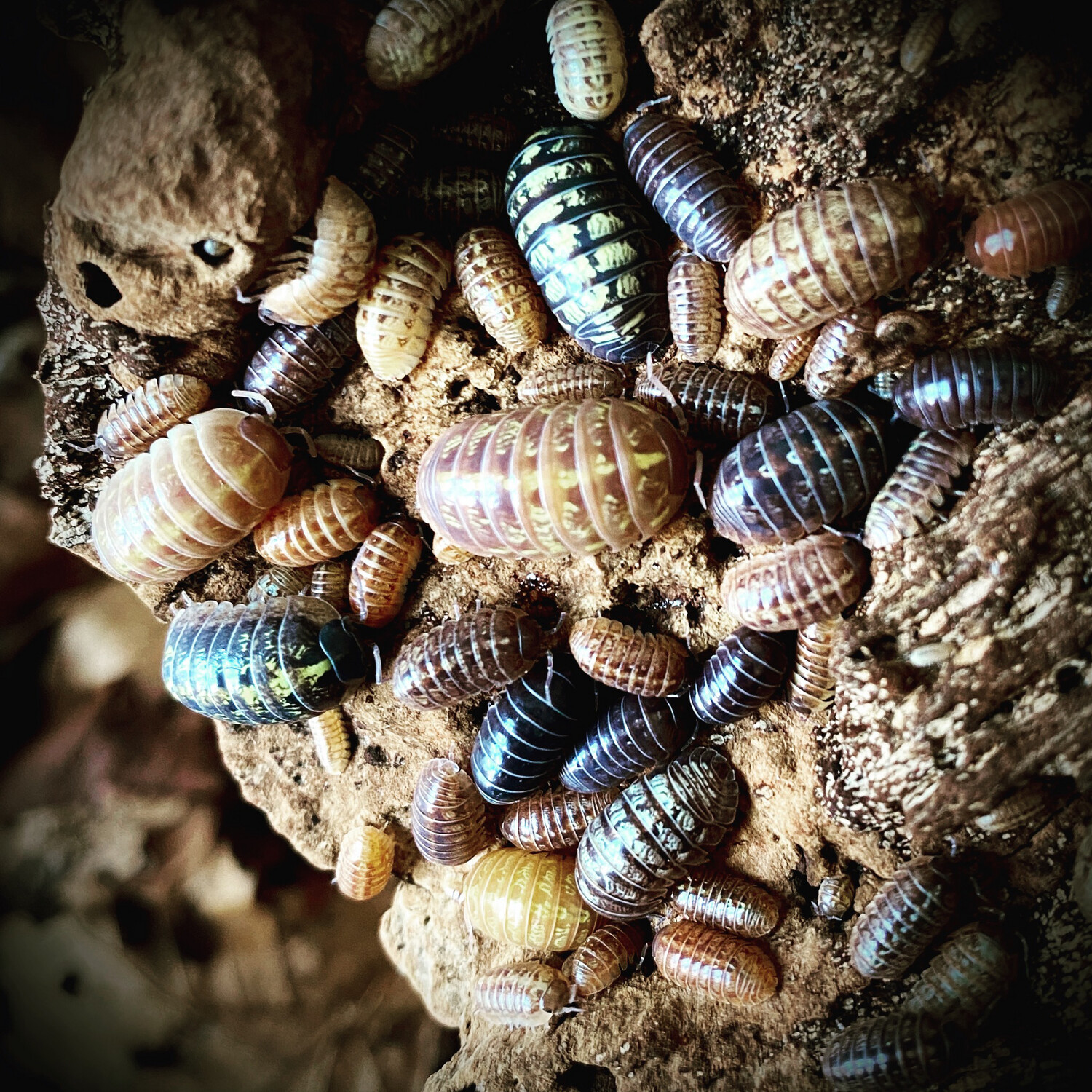
Armadillidium vulgare ‘Gem Mix’
Armadillidium vulgaris “Gem Mix” is a popular variant of isopod within the Armadillidiidae family, known for its striking appearance and is frequently kept as a pet or used in educational settings.
| Common Name | vulgareGem Mix |
|---|---|
| Scientific Name | Armadillidium vulgare ‘Gem Mix’ |
| Taxonomy |
|
| Habitat | In the wild, Armadillidium vulgaris is commonly found in damp environments such as leaf litter, soil, under rocks, boards, or decaying wood. They prefer habitats that provide moisture to prevent desiccation. |
| Region | Unknown |
| Lifespan (Years) | 2 |
| Diet | Decaying plant matter, leaf litter, calcium supplement, occasional protein |
| Humidity Range (%) | around 80% |
| Temperature Range (°C) | |
| Conservation Status | Generally, **Armadillidium vulgaris** is not considered endangered; however, they can be affected by habitat destruction and changes in humidity levels due to urban development and climate factors. |
| Coloration | The “Gem Mix” designation refers to the variety of colors and patterns found within this isopod line. Specimens often feature a range of vivid colors, including variations of blues, greens, purples, oranges, and browns, often appearing iridescent.
The coloration results from genetic variability and selective breeding, aiming to enhance visual appeal through different morphs. Each individual may present unique patterns, ranging from speckled to striped. |
| Care Notes | Provide moist substrate with hiding spots. Use leaf litter, decayed wood, and moss. Ensure moderate to high humidity with ventilation. |
| Breeding Info | Can breed in captivity with stable environment. Some species are prolific, others slow. |
| Adult Size (cm) | Armadillidium vulgaris, including the “Gem Mix” variant, typically sizes around 1 to 3 cm in length, depending on individual specimens and their environment. |
| Temperament | Shy to docile, species dependent |
Image credited to Adam @ MicroExotics
Was this helpful?
0 / 0